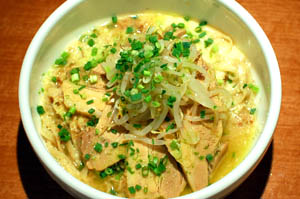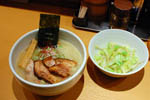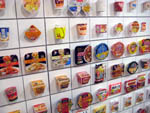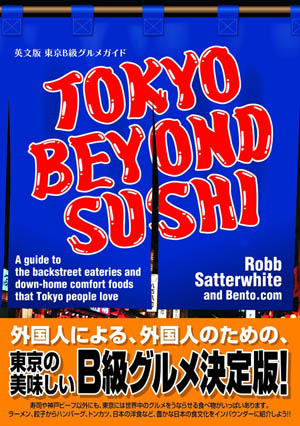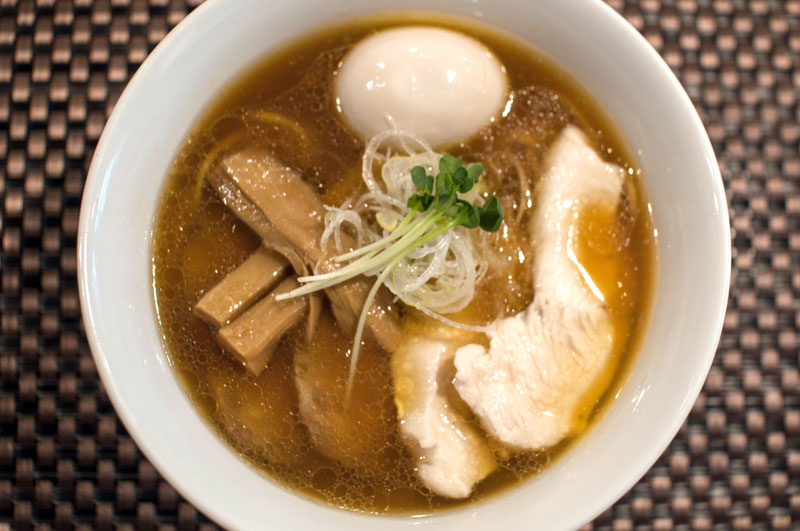
Ramen styles
Searching Tokyo for an excellent ramen shop can be quite a task. With a shop on practically every corner, one is left with some questions. What is that wonderful (or horrible) smell? Is it worth the ninety-minute wait? Should a shop without a lady in sight detour me from bringing a date?
Luckily, for those fluent in Japanese, there is a wealth of information out there, both online and off. Countless magazines and guidebooks map out the best of the city's thousands of ramen shops. There are even a few English-language websites devoted to the search for the perfect bowl.
Ramen, originally of Chinese origin, has become a regional dish in Japan. Prefectures, cities, even local neighborhoods boast their own unique styles. But for what it's worth, ramen can be broken down into four unique styles: shoyu (soy sauce-based), shio (salt-based), tonkotsu (pork bone soup-based), and miso (fermented soy bean-based).
Shoyu
The most classic style in Tokyo is a hot bowl of shoyu ramen. Don't always expect simple, as shoyu ranges from nostalgic tastes (Manpuku 萬福) to light "cafe style" (Afuri) to potently strong (Nikusoba Keisuke 肉そばけいすけ), famous (Taishoken 大勝軒) to almost unknown. A good bowl of shoyu ramen is often considered the pinnacle of ramen success.
Shio
Because the taste is so light, shio ramen is often overlooked for a stronger, richer bowl. But expert chefs have recently taken shio to a gourmet level. Using high-quality ingredients seems to be the key.
Recommended: Hajime (らあめん元), which imports salt from Mongolia.
Miso
The polar opposite of a light shio is a thick bowl of miso ramen. The initial idea is usually the same - eggy, yellow noodles and a thick broth of blended miso paste. But from there, anything is possible.
Gogyo (五行) in Nishi-Azabu blackens their miso in a kitchen-side fire show.
In Nakano, Ringodo (みそや林檎堂) serves what many have dubbed the best egg in Japan. Out in Machida, Oyaji uses imported Dutch lard to brew a rich, creamy soup that makes the train ride out from the city center worthwhile. For a fiery spicy miso, Kikanbou (鬼金棒) is a local favorite.
Tonkotsu
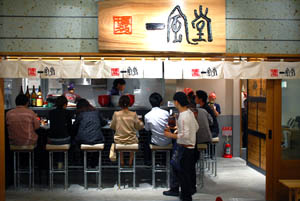
Internationally popular Ippudo, with more than a dozen spots around Tokyo, is always a safe bet for some creamy tonkotsu. Straying from the safe has its benefits, though. Ikaruga (斑鳩) is considered one of the creamiest tonkotsu ramens in Tokyo. Classic Hakata-style at Nagi (凪) has drawn a lot of recognition.
Other styles
Though most ramen fall into one of the four types, others are harder to categorize. Bassanova blends Thai-inspired spices into their Japanese soup for an excellent green curry ramen.
Tsukemen, where the noodles are served separate and dipped into a thicker soup, can be enjoyed at many shops around the city. Two of the best are Tetsu and Fuunji (風雲児). For a perfect bowl after drinking, Mitsuyado (三つ矢堂) serves a double-cheese version that can cure any late-night cravings.
